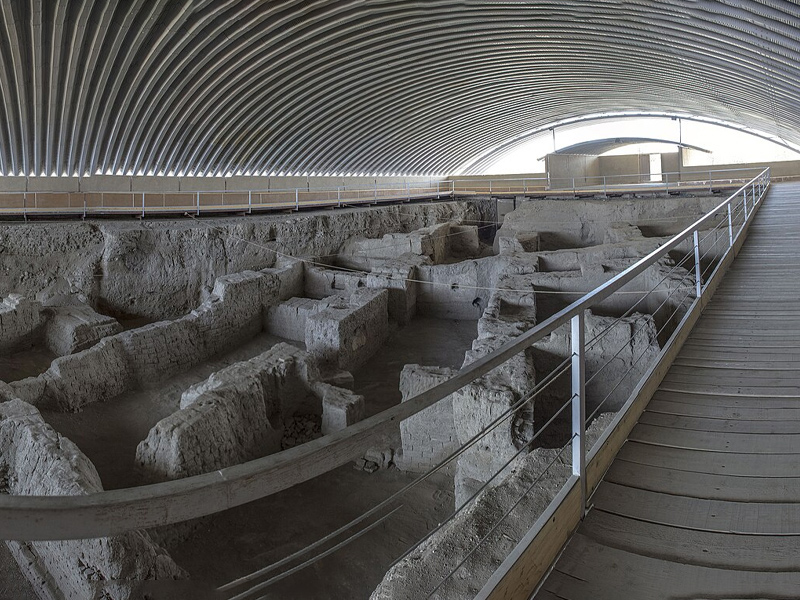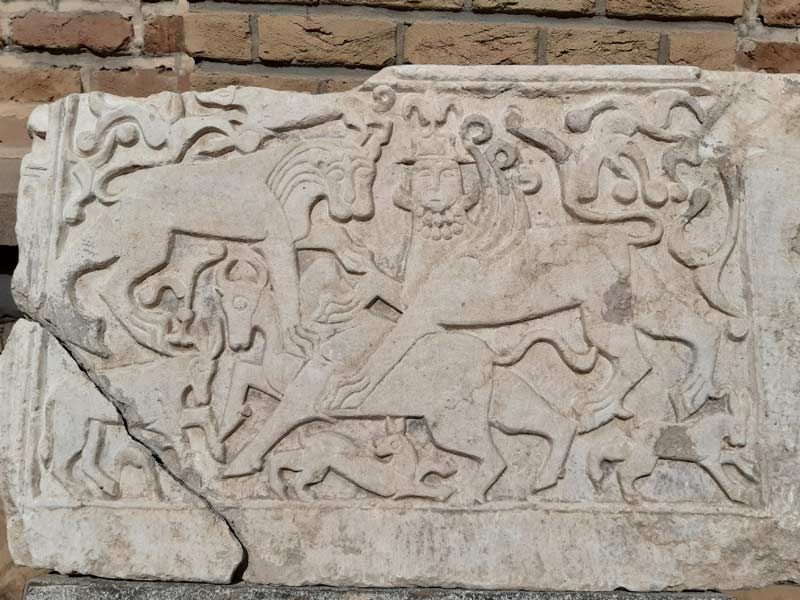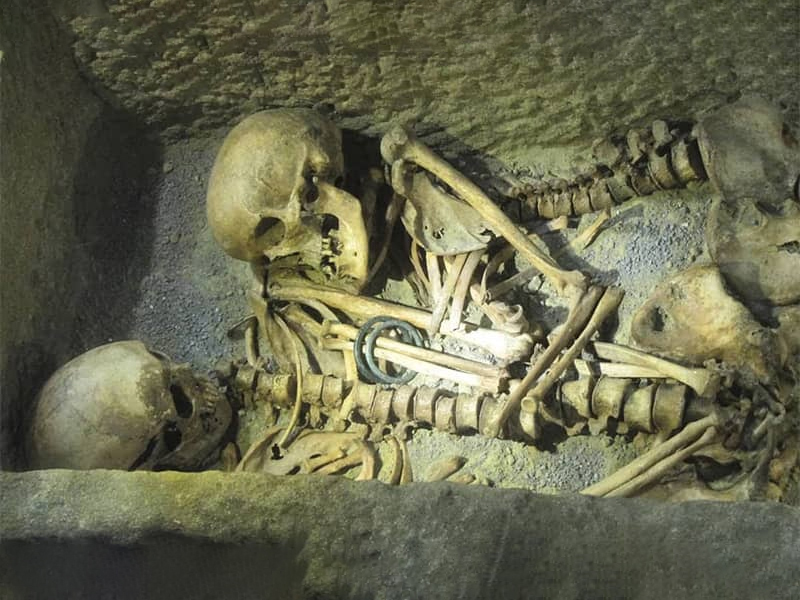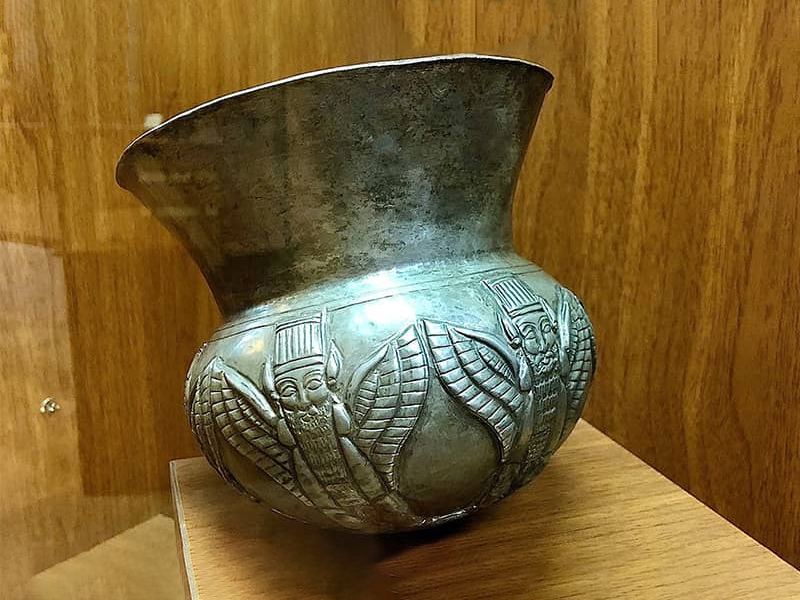The ancient city of Hegmataneh is one of the most important ancient sites in Iran, with a history dating back 3000 years. This historical city is located in present-day Hamadan. You might wonder why this city is of great historical importance. Stay with Eligasht to review some of the most significant features of this ancient site.
Book Iran Air flights from London to Tehran and Tehran to London with Eligasht UK:
Introduction to the ancient city of Hegmataneh
Hegmataneh, also known as Hegmataneh Hill (because it was built on a hill), is among the national cultural heritage of Iran and has a history of over 3000 years. This historical city is located in Hamadan, at the end of Ekbatan Street, near the Hegmataneh National Cultural Heritage and Tourism Base. The extent of the hill on which this city is located is so large (about 35 hectares) that it has earned the title of the largest ancient hill in Iran. It is worth mentioning that previously, about 10 hectares of the Hegmataneh lands were privately owned by individuals, which were acquired by the government and added to this ancient site.
What does Hegmataneh mean?
You may want to know what other titles the historical city of Hegmataneh is known by and what Hegmataneh means. It should be noted that in an inscription from Bisotun dating back to the time of Darius the Great, Hegmataneh is mentioned as “Hamgmatan” in Old Persian, “A-K-M-D-N” in Elamite, and “A-G-M-T-N” in Akkadian. The Greeks referred to this historical city as “Ekbatana” or “Agbatan” or “Ecbatanae Parthorum” in the Greek language. In Latin, this city is called “Achmetha,” in Aramaic “Ahmathan” and “Hamtan,” and in Middle Persian, it is referred to as Hamadan.
But what does Hegmataneh mean? Historians and linguists believe that this word means a place of gathering and derives from the word “Hangamat.” It seems that even before the Medes period, this place was a gathering place for people, which is the reason for this naming.
Historical background of the ancient city of Hegmataneh
We cannot talk about the ancient city of Hegmataneh without delving into its historical background. As we know, the Medes were a group of Aryans who, by defeating the Assyrians, managed to establish the first Iranian kingdom. From the surviving relics of ancient Iran, it can be estimated that this historical city was formed by the Medes in the 17th century BC and was, in fact, the first capital of Iranian kings. However, this historical city is not only comprised of palaces, mansions, and artifacts related to the Medes period. After the Medes, it was also utilized by the Achaemenids and the Arsacids.
This ancient city was constructed with such sturdy materials that, alongside Athens in Greece and Rome in Italy, it is counted among the few well-preserved ancient cities from ancient times.
Hegmataneh during the Medes period
The Greek historian Herodotus mentioned the historical city of Hegmataneh in his writings as a city belonging to the Medes and believed that this city was chosen as the capital around 800 BC. He described this city as a majestic complex situated on a large hill with seven concentric walls. The inner part of each wall had a greater height than its outer part.
Some archaeologists believe that the historical city of Hegmataneh was built by the order of King Jamshid or the mythical figure Semiramis. Others attribute its construction to Fravartish, the third king of the Median dynasty. However, according to the information provided by the Encyclopedia Iranica, the Median kingdom was established by Deioces, and Hegmataneh was chosen as its capital.
It should be noted that in the discovered coins from the Sassanian period, “Ahmatan” is introduced as the place of minting. The earliest texts that mention the Medes and their territories are found in the calendar of the third Shahrivar month. In these writings, “Madai” or “Amadai” is referred to as the people and the territory of the Medes.
Hegmataneh during the Achaemenid period
As mentioned earlier, the ancient city of Hegmataneh was also utilized during the Achaemenid period and served as the summer capital of the Achaemenid dynasty. Although after the Achaemenids gained dominance over the Medes, this ancient city never regained its previous importance and grandeur, it was still significant due to its location on the royal road, and the Achaemenids paid attention to its prosperity.
It is said that during the time of Darius III and the war with Alexander the Great, Hegmataneh had been turned into ruins, and Darius ordered the construction of a large palace or pavilion in the center of the city. The pavilion had 300 hiding places for the royal treasures, and eight of them were protected by iron doors.
Hegmataneh during the Parthian period
According to a Greek inscription obtained from the statue of Hercules at Behistun, dating back to 148 BCE, it can be said that the historical city of Hegmataneh continued to exist until the reign of the first Parthian king, Mithridates I. Furthermore, historical texts reveal that Antiochus VII briefly stayed in Hegmataneh in 130 BCE in an attempt to restore Seleucid power in Iran. Tigraeus II also resided in Hegmataneh for a while after that, as he attacked Mithridates II. The Arsacid dynasty used Hegmataneh as its capital and the royal mint.
This provides a glimpse into the historical significance of the ancient city of Hegmataneh throughout different periods, from its origins in the Medes era to its utilization during the Achaemenid and Parthian periods.

Mysterious Architecture of Hegmataneh
The ancient city of Hegmataneh possesses highly advanced and intricate architecture, making it one of the most significant ancient sites in Iran. In addition to palaces and interconnected fortresses, this ancient city features residential houses with advanced designs and meticulously engineered and organized water supply networks. Join us at Eligasht as we explore the various parts of this historical site together.
Seven Nested Fortresses!
The ancient city of Hegmataneh is home to nested fortresses with precise and advanced designs, covering an area of approximately 35 hectares. Alongside these complex seven nested fortresses, there were residential units. Historians believe that the Medes people requested their king, Diaaku, to establish their settlement close to the royal palace. Each of these fortresses had its unique purpose, with the final fortress being the king’s fortress. According to historical texts, Diaaku, inspired by the Babylonians, ordered that each fortress’s towers have a specific color. These towers, in order from first to seventh, had the following colors: white, black, purple, blue, orange, silver, and golden.
It is said that the exterior space of the fortress walls resembled the fortification of the city of Athens. Greek historians’ writings indicate that this palace had various decorations, including gold and silver work, ink painting, and mosaic work, along with magnificent doors, porticos, and columns.
Residential Sections of Hegmataneh
After extensive excavations carried out in the historical city of Hegmataneh in the year 1983 by Dr. Sarraf, the remains of large adobe structures constructed with advanced architecture and precise engineering were discovered in this area. These adobe structures consist of building units measuring 5.17 meters by 5.17 meters. Each of these units has a central hall facing a central hall along with side rooms and two small storage rooms at the end.
The plan of these adobe structures is perfectly symmetrical, with a street or alley existing every 35 meters, where the residential units are located between them. Surrounding walls covered this complex, and at intervals of 90 meters, square-shaped towers were built among them. It seems that the construction of the architectural complex within these walls dates back to the Arsacid period. Some believe that this complex was built on older ancient structures.
Water Supply System of Hegmataneh
As mentioned earlier, one of the distinctive and fascinating features of the ancient city of Hegmataneh is its highly advanced and organized water supply system. The water supply network of this city was designed in a way that there were crossing passages at a width of 3.5 meters between the water channels. These passages extended from the northeast to the southwest, and their floors were covered with square-shaped tiles. This design prevented water loss effectively, allowing people to have easy and equal access to city water.
Although this may seem obvious nowadays, when urban engineering had not advanced significantly, the construction and design of such a water supply system in the historical city of Hegmataneh demonstrated the ingenuity of the Medes.
Different Sections of Hegmataneh for Visiting
Perhaps, by reading about the ancient city of Hegmataneh so far, you have become eager to visit this historical site in Hamadan and learn more about its interior spaces. Join us at Eligasht as we continue to review the remarkable places to see in Hegmataneh.
Hegmataneh Museum
Between 1941 and 1946, a six-classroom school was built in a section of the Hegmataneh site. In the 1950s, it was handed over to the Center for Archaeology to be used for archaeological and research purposes. After valuable artifacts were discovered in the excavations of the ancient city of Hegmataneh, the purpose of this area was changed to house a museum for preserving these artifacts. In 1993, the walls between the classrooms were removed to expand the museum space. The current area of the museum is approximately 600 square meters and includes various sections such as the museum office, photography workshop, conservation workshop, and library. It is worth mentioning that the historical artifacts in the Hegmataneh Museum are divided into two general categories: pre-Islamic and Islamic. We will now mention the artifacts displayed in each of these sections.

Historical Section
This section, displayed in the western corridor, hall, and part of the courtyard, includes the following items: columns, column bases, lintels, stone stems, four-sided clay bricks, bowls, jars, various large and small jars, glass vessels, clay figurines, cups, ceramic coffins, decorative stones, glass stamps with ritual motifs, decorative stone beads, bones, engraved arrowheads, ceramic human statues, and an inscription column with cuneiform script from the reign of Ardeshir II of the Achaemenid period.
It should be noted that these artifacts were all discovered in the Shirsangi gate, Shurin Village, and Ibn Sina High School and belong to the Achaemenid, Sasanian, Parthian, and the second half of the first millennium BCE to the first half of the first millennium CE periods.
Islamic Section
This section of the Hegmataneh Museum, located in the eastern corridor, part of the courtyard, and the main area, houses the following artifacts: ceramic vessels, water basins, stone troughs, a large wooden door (arosi) from the modern period, gravestones with Kufic, Thuluth, and Nasta’liq inscriptions from the Islamic period, coffins made of ceramic and stone from the Parthian and Islamic periods, and ceramic jars of different sizes and designs for storing perfumes and liquids.
The artifacts in this section were discovered in Asadabad and Qurban Tower and belong to the early, middle, and late Islamic periods, as well as the contemporary period.
Related post
The Avicenna mausoleum in Hamadan, the Most Famous Iranian Physician in the World.
Introduction to 9 Iranian Poets Across the Country
Important Historical Artifacts of Hegmataneh
There are valuable and precious historical artifacts discovered in the ancient city of Hegmataneh that you should know about if you intend to visit this site. Among these notable artifacts, the mention should be made of the golden goblet and silver bowl known as “Takuk-e Zarin” or “Rhyton” from the Achaemenid period, which is preserved in the National Museum of Iran. The golden plaque of Arsham, inscribed with cuneiform script, is another artifact belonging to the Achaemenid era. The plaque of Darius II, the silver goblet of Ardeshir I, and the stone column base are other valuable artifacts obtained from the Hegmataneh mound.
Visiting Hegmataneh
If you plan to visit the ancient city of Hegmataneh, we recommend the warmer seasons such as spring and summer because Hamedan has relatively cold weather. You can visit this site from 9 am to 7 pm in the first half of the year and from 9 am to 5 pm in the second half of the year. It is worth mentioning that you need to purchase a ticket for each person to enter.

Final words
Hegmataneh is one of the most important historical sites in our country, which, although attributed to the Medes, also contains valuable artifacts from the Achaemenid and Parthian periods. This city had advanced and precise engineering, including interconnected fortresses, residential units, and a water supply system. If you are interested in the history and ancient culture of our country, we recommend visiting Hegmataneh in Hamedan.
FAQ
-
What is the significance of the ancient city of Hegmataneh?
The ancient city of Hegmataneh holds great historical significance as it was the capital of the Medes, the first Iranian kingdom. It also served as a capital for subsequent dynasties, including the Achaemenids and the Parthians. Its well-preserved ruins provide valuable insights into ancient Iranian civilizations.
-
How old is the ancient city of Hegmataneh?
The ancient city of Hegmataneh has a history dating back over 3000 years. It was established by the Medes in the 7th century BCE, making it one of the oldest historical sites in Iran.
-
What can visitors see in the ancient city of Hegmataneh today?
Visitors to the ancient city of Hegmataneh can explore the ruins of palaces, temples, and other structures that once stood there. The site also features museums that display a range of artifacts unearthed from the area, providing a glimpse into the daily life and culture of ancient civilizations.
-
Is the ancient city of Hegmataneh accessible to the public?
Yes, the ancient city of Hegmataneh is open to the public. Visitors can explore the archaeological site, walk through the ruins, and learn about the rich history of the area. The site is managed by the Hegmataneh National Cultural Heritage and Tourism Base.
-
How can I get to the ancient city of Hegmataneh?
The ancient city of Hegmataneh is located in Hamadan, Iran. Visitors can reach Hamadan by various means of transportation, including by air through the Hamadan International Airport. From Hamadan, the site is accessible by local transportation, such as taxis or buses.

